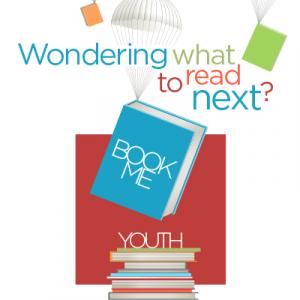Reviews
All reviews are subject to the library's Patron-Generated Content policy.
| Into the Uncut Grass | Posted by eshek on Friday, October 11, 2024 | Into the Uncut Grass by Trevor Noah is a book about nostalgia and imagination, for readers of all ages, to be read solo or in the company of others. On the surface, it seems to be merely a whimsical story about a young boy and his wise teddy bear, Walter, who go on an adventure "into the uncut grass," the unknown lands beyond the boy's house, because the boy disagrees with his mother's rules. While it is indeed an adventure story, it is also a tale about seeing the world from other perspectives, and trying new ideas as a result. The snails and coins that the boy meets are reminiscent of Aesop's fables, while his other encounters hark back to childhood favorites, such as "We're Going on a Bear Hunt." Inspired by his relationship with his own mother, Trevor Noah leans into his sentimental and thought-provoking perspectives to tell a story both heartwarming and poignant. The tone in this book is different from his humorous memoir, Born a Crime, but the effect is one of universality, rather than specificity. Everyone can take something away from this book, even if it's just a sudden desire for waffles. Fans of The Little Prince by Antoine de Saint-Exupéry; The Boy, the Mole, the Fox and the Horse by Charlie Mackesy; and Winnie-the-Pooh by A.A. Milne will likely enjoy Into the Uncut Grass, as will fans of cozy, feel-good adventure stories. (Readers who liked The House in the Cerulean Sea by T.J. Klune may also enjoy the gnome cameo and the other quirky characters in this book.) Sabine Hahn's whimsical illustrations also bring to mind the works of Quentin Blake. |
|||
| When Nightmares Come to Life | Posted by eshek on Thursday, October 3, 2024 | Well. Every time I tried to predict how this book would go, it found a new way to surprise me. I still am not entirely sure I know how it ended. To backtrack--Don't Let the Forest In is author C.G. Drews's YA horror debut. It follows high school student Andrew Perrault as he struggles through his senior year while dealing with entitled rich bullies, ambivalent teachers, and his twin sister Dove apparently avoiding him. Then, monsters attack from the creepy forest bordering the gothic private school, and the only person who can fight them off is Thomas Rye, for whom Andrew has some very complicated feelings (and they were roommates). As if all of that wasn't hard enough, Andrew also has crippling anxiety and regular panic attacks. Buckle in--this ride pulls no punches. I really wanted to devour this book in one sitting, and I'm very glad I did. This is a story that will swallow the reader from chapter one; it isn't for the faint of heart. Drews does a fantastic job of combing dark fairy tales with the horror genre--the Brothers Grimm would be proud. From the Victorian architecture to the detailed descriptions of Thomas's artwork and Andrew's flash fiction stories--'papercuts,' he calls them--the reader is fully steeped in the horror experience. As Andrew also increasingly questions his own reality, the reader is right there with him, trying to sort out fact from fiction, constantly propelled forward by the tantalizing foreshadowing dropped around Andrew throughout the book. The desire to know more becomes almost a compulsion when paired with Drews's lyrical prose. Now that I've finished the novel, I want to immediately read it again! With monsters galore, this is the perfect Halloween read, right up there with T. Kingfisher's What Moves the Dead. Fans of Holly Black and The Hazel Wood by Melissa Albert will enjoy the dark fairy tale tone and structure of this book, while fans of The Dead Boy Detectives and The Babadook will enjoy not just the horror/supernatural aspect, but also the queer associations. I, for one, loved the ace protagonist and will look forward to the next world C.G. Drews has in store. |
|||
| In the Deep Dark, there is.... | Posted by eshek on Thursday, August 22, 2024 | Mags Herrera has her hands full. A senior in high school, she seems older than her young years--she takes care of her abuela, a multi-stroke survivor; has a tense relationship with her mother; and a secret she is desperate to protect, all on top of typical high school stressors like jobs, grades, and dating. When Mags's childhood friend, Nessa, returns to their hometown, the delicate balance Mags has built begins to crumble...but to what end? In this standalone graphic novel, Molly Knox Ostertag, featured in Forbes 30 Under 30 (2020), masterfully depicts Mags's story in simple but expressive line work, poignant dialogue, and a dramatic contrast of grayscale/color. (Ostertag's use of color palette(s) as a storytelling device are what bumped this rating up to five stars.) Readers will laugh, they will cry, they will gasp, and they will cheer for Mags, Nessa, and the very human cast of characters in this book. It will stay with them even after the final page has been turned. Those who enjoy The Deep Dark may also enjoy Shubeik Lubeik by Deena Mohamed, We Are Okay by Nina LaCour, The Harrowing by Kristen Kiesling, Witchlight by Jessi Zabarsky, and My Favorite Thing is Monsters by Emil Ferris. Other works by Molly Knox Ostertag include The Girl from the Sea and the Witch Boy trilogy. |
|||
| Culinary Nostalgia | Posted by eshek on Monday, July 29, 2024 | Mysteries come in all forms these days, from darker, grittier mysteries, classic noir, and Japanese "iya-misu" (trans. "ew mysteries") to cozy, low-stakes puzzles. Recipes and food showcases also seem to be increasingly popular beyond the typical cooking show. So, why not do both? Welcome to The Kamogawa Food Detectives, the first book in a cozy mystery series in which a retired Kyoto detective, Nagare Kamogawa, and his daughter Koichi investigate and recreate lost dishes at their mysterious Kamogawa Diner. While the structure of the book is somewhat formulaic, the pattern is such that the reader could potentially read the chapters out of order (apart from the expository first chapter), depending on which featured dish one is in the mood for. Quiet but compulsively readable, one can easily devour this book in one sitting and still have an appetite for seconds. Each chapter is chock-full of delicious meals, from light summer fare to hearty banquets. Each morsel is flavored with nostalgia, bringing to mind an appreciation for the small joys in life. Warning: Don't read this book while hungry--by the end, you'll be starving for all these homestyle foods to comfort you like a bowl of hot soup. Readers who enjoy this book may also like: Before the Coffee Gets Cold by Toshikazu Kawaguchi, Welcome to the Hyunam-Dong Bookshop by Hwang Bo-Reum, What You Are Looking For Is in the Library by Michiko Aoyama, Days at the Morisaki Bookshop by Satoshi Yagisawa, The Travelling Cat Chronicles by Hiro Arikawa, If Cats Disappeared from the World by Genki Kawamura, Witch Hat Atelier Kitchen by Hiromi Sato and Kamome Shirahama, What Did You Eat Yesterday? by Fumi Yoshinaga, and She Loves to Cook, and She Loves to Eat by Sakaomi Yuzaki. |
|||
| #OxfordEddiecated | Posted by eshek on Thursday, July 25, 2024 | Eddie Ndopu is an accomplished South African human rights activist, with prestigious and prolific accolades from all over the globe. He was also diagnosed as an infant with Spinal Muscular Atrophy, a genetic condition that has rendered him disabled from childhood with an increasing lack of motor functions. Sipping Dom Pérignon Through a Straw is Ndopu's memoir of his struggles and successes at Oxford University. It was also entirely written on his iPhone with his 'one good finger.' When Ndopu applied for a Master's Degree program at Oxford, he was living in Johannesburg, South Africa. Although the university initially offered him a full ride scholarship, Ndopu still had to crowdfund to supplement his costs as an international disabled student, especially since his dedicated care aide, Lucky, was unable to accompany him. Ndopu's year at Oxford is a series of trials and achievements apart from his coursework: he is elected student body president, but his care aides are less than satisfactory. He has amazing friends, but also condescending professors. Serendipity strikes, but so does betrayal. (Stephen Hawking, another lauded disabled celebrity, makes a brief cameo, among others.) This memoir is a testament to the struggles of having a disability, but also the potential and ability of achievement. Often described as an eloquent speaker, Ndopu's memoir is also a quick read, each page turning almost by itself. Scenes at Oxford are interspersed with flashbacks, providing relevant context to the impact of specific scenes. While the short chapters seem episodic, they are in fact part of a larger whole, spanning the entirety of Ndopu's Master's program. His experiences inform and influence his final Master's thesis, as he studies accommodation and public policy in order to advocate for other disabled people. While every experience with disability is different, Ndopu's book sheds light on the day to day experience of existing, from getting out of bed to going to the movie theater, and poignantly illustrates both the importance of inclusivity and how accommodations for some benefit society as a whole. Readers will come away from this book both entertained and enlightened, while also looking forward to more of Ndopu's work. Readers who enjoy this book may also enjoy Born a Crime by Trevor Noah, and Travelling to Infinity by Jane Hawking, which was adapted into the hit film The Theory of Everything (2014). |
|||
| Indian Burial Ground | Posted by eshek on Saturday, May 25, 2024 | I have been eagerly anticipating the arrival of this novel ever since stumbling across Nick Medina's debut novel, Sisters of the Lost Nation (review here). Medina, a member of the Tunica-Biloxi Tribe and a Chicago local, draws upon his native folklore and history to craft mystery thrillers (with a dash of horror) that both incorporate Indigenous culture and raise awareness about contemporary Indigenous struggles. Sisters of the Lost Nation, for example, draws from various Native folktales about a rolling/disembodied head, but also seeks to encourage support and activism for #MMIWG (Murdered and Missing Indigenous Women and Girls). Indian Burial Ground, Medina's second book, is a prequel/follow-up to Sisters, but is most accurately a companion novel--readers don't need to read one to understand the other. If you do, there are some wonderful cameos of central and significant characters that readers will welcome like old friends. (Hi, Anna!) This book focuses more on the Takoda Tribe's origin story (starring alligators), with a dash of Coyote, and haunted by a mysterious malevolent entity. Indian Burial Ground follows Louie and Noemi (first appearing as supporting characters in Sisters) as they navigate life on the rez before and after the establishment of the casino featured in Book One. Louie's story is mostly told in the prequel chapters, and follows his coming-of-age story as he struggles with an alcoholic mother, his role as a teenage uncle (Noemi is his niece), and a tribe that has not yet found financial support. Future adult Noemi, on the other hand, must come to terms with the sudden death (possible suicide) of her boyfriend and the stigma regarding mental health on the rez. Medina's storytelling masterfully weaves traditional tales with suspense, drawing the reader in while constantly wondering which accounts to believe. Mystery blends with supernatural, leaving the border between reality and imagination blurred: a technique he demonstrated skillfully in Sisters, and which returns in Indian Burial Ground. Medina is also adept at plot twists--even at the very end, the reader is kept on their toes. Will their guess be correct? What element(s) did they miss? While this novel does answer some questions left at the end of Sisters, more remain...but fear not--Medina has already announced plans for a third installment of the series! Indian Burial Ground is perfect for fans of quick, short chapters; multi-POV narration; and alternating timelines. This is definitely a page-turner focused on humanizing social issues through the lens of individual perspectives. Fans of ambiguous supernatural elements and mythology will enjoy this book, though it is not for the faint of heart. If you enjoy Stephen Graham Jones, Oskar Hokeah, and Killers of the Flower Moon, this is a book for you! Also, for audiobook fans, the audiobook version is narrated by Indigenous/First Nations actors Gary Farmer (Reservoir Dogs) and Erin Tripp! |
|||
| You Should See Them in a Crown | Posted by eshek on Thursday, May 2, 2024 | Fairy and folk tales are an integral part of our childhoods—we hear them from relatives, teachers, maybe even library story times. We see them in films and books, hear them in music, and learn life lessons from them: stranger danger, inner strength, self-confidence. Similarly, we return to them as adults, seeking them in new forms, perhaps passing them along to future generations. Whether Disney or Brothers Grimm, Hans Christian Andersen or traditional tales, these stories are recycled and remade to adapt and suit the world(s) that need them. Crowned by Kahran and Regis Bethencourt exemplifies this, but also re-imagines the possibilities of a retelling. The internationally famous forces behind CreativeSoul Photography and named Canon Explorers of Light, the Bethencourts empower BIPOC children through their photography and visual storytelling, seeking to highlight beauty both within and without: specializing in child and lifestyle photography, they not only celebrate elements of Blackness such as hair and skin tone, they also bring out their subjects’ personalities through their images. In this collection of new and (re-)imagined stories, the Bethencourts combine European lore (ex. Cinderella and Snow White) with traditional African and African American folk and fairy tales, as well as a collection of new stories for our modern urban age. The stories maintain their traditional core, but are tweaked and rewritten to connect with readers—especially Black readers—growing up in the digital age. The stories are short and quick to read, more Disney in tone than the Brothers Grimm, and emphasize lessons of strength, kindness, wisdom, and community. They highlight beauty in all its forms, from leg braces to baldness to albinism, and encourage both strong, capable girls and gentle, empathetic boys. Most stunning of all is the photography itself—visually lush, with vibrant color and captivating collage composition, the Bethencourts incorporate both the innate traits of their models and traditional motifs from cultures all over the African continent. The costumes combine the modern and ubiquitous with the fantastical, while the hairstyles and makeup meld tradition with the chic and speculative—if spec fic genres were hairstyles, this book would have them all—truly a (Black) cosplayer’s dream! I would recommend this book for the images alone, but the visuals and text are what ties everything together. (Also, the experience of the creative process looks like so much fun, at least going by the behind-the-scenes photos at the end of the book.) Readers who are interested in more Black short story collections may enjoy Africa Risen edited by Sheree Renée Thomas, et al. and How Long 'Til Black Future Month? by N.K. Jemisin. For more retellings of Black Diaspora folktales, see Jerry Pinkney and Virginia Hamilton. For more Black authors of spec fic, try P. Djèlí Clark, N.K. Jemisin, and Octavia E. Butler. |
|||
| You can have opportunity or you can have home, but not both. | Posted by eshek on Friday, April 5, 2024 | Wow. I will admit, I wasn't sure what to make of this book when I first picked it up, but I'm truly glad I did. This standalone graphic memoir recounts the two years Kate "Katie" Beaton spent working in the Alberta oil sands in Canada as a recent college graduate entering a jobless market. Her perspective is colored by a nexus of layers: she is a young white woman from Cape Breton in Eastern Canada; like many in her home community, she migrates across the country from Francophone Canada to the British-influenced West Coast, and works in a very isolated, hypermasculine environment that wreaks havoc not only on the natural environment and First Nations communities there but also the employees themselves, who risk their health and their lives to support families back home. In her memoir, Katie, who faces her own obstacles, trauma, and--most of all--looming student loans, often wonders, If these men--who could be her brothers, father, uncles--were at home, would they be "normal"? At the same time, the oil sands are such a specific environment (especially in the pre-smartphone era early 2000s) that returning to "normal" society is like entering another dimension. This is a powerful memoir, and reminds readers to consider forgotten populations and the hows and whys of their struggles. Beaton, an Eisner, Ignatz, Harvey, and Doug Wright Awards-winning cartoonist, renders this memoir in all its complex shades of gray. She doesn't shy away from tough topics, such as rape, the health and environmental impacts of the oil sands, the impact on Indigenous peoples, and the struggle and invisibility of blue collar workers, especially men. At the same time, she doesn't sensationalize either: these problems are widespread, but not graphically drawn; rather, the impact is depicted through vagueness and implication, while coarse dialogue and slang highlights the realistic truth of both flaws and camaraderie. Beaton is also upfront with her own social privilege and imperfect knowledge--she neither knew nor experienced the full tragedy of the oil sands on the lands they used and the people they stole from, but pulls no punches with the dark side of the industry she worked for out of necessity--the dark side of capitalism and the hypocrisy of the "support" and "reparations" offered by bigwigs to avoid public criticism. Text aside, the panels are organized and readable, with a comfortable balance between text and images, and a grid-like layout that flows easily for both the experienced comics reader and the newcomer just dipping a toe into the medium. As someone who knows very little about the industry and only general brushstrokes of Canadian history and social complexities, I found this memoir to be both incredibly informative and a riveting read. The title, too, remains with me--although the actual birds only appear briefly in the book, their symbolism is clear--the toxins of the oil industry stick to everyone, are very difficult to dislodge, and may eventually prove fatal. It is also a very difficult experience to imagine unless one knows what is like to be there. Readers of this memoir may also be interested in Tar Sands by Andrew Nikiforuk, Killers of the Flower Moon by David Grann, The Death and Life of the Great Lakes by Dan Egan, and Fire on the Water by Jill MacGregor. |
|||
| Only You Can Save (Hu)Mankind... | Posted by eshek on Monday, February 5, 2024 | The year is 2086, and the world is celebrating the twentieth anniversary of the cure for ESV or "the Sleep," a deadly pandemic. Adam Garfield, now ex-Navy, lost his father to ESV and is currently recovering from a bomb detonation in which he lost a leg. Rather than retire at the age of 28, he is instead recruited to join CNAS, an organization within the military that researches ESV. Adam is to be a "Companion" to the genius "Diver" Rune Winter, aka King, who is one of the most successful--if elusive--people to treat ESV patients: he "dives" into their minds (called "limbo") and heals them. However, Adam and Rune quickly realize that there may be more to ESV than meets the eye... In a story reminiscent of Satoshi Kon's Paprika, with a gritty USA setting similar to Akimi Yoshida's Banana Fish, tough bro vibes (and loveable dog) like Cowboy Bebop, and a dash of Junji Ito's horror, Ai Tanaka weaves an intriguing and intricate world not so different from our own. The premise is interesting, though it may at times brush the limits of the reader's suspension of disbelief. Originally published in Japan in 2017, parts of the series may also feel prophetic, especially to English readers in 2024. Still, readers will be quickly sympathetic to Adam and Rune. Fans of action, (psychological) suspense, and high-tech sci-fi won't be disappointed. This is a series that I will likely read to its conclusion and am definitely looking forward to volume two! |
|||
| The Travelling Cat Chronicles | Posted by eshek on Monday, January 8, 2024 | A cat person myself, the novel piqued my interest for titular reasons, but also authorial ones. Before this, I knew Hiro Arikawa only for Library Wars (for which I'd read the manga but not the original novels...yet!), a futuristic semi-dystopia about libraries fighting against censorship and romance(s) blooming between bibliophiles. I'd enjoyed that series but had no idea what to expect with this book, which is a complete tone and genre switch. Nana, a hardy stray cat in modern-day Tokyo, is gradually won over by his eventual human, Satoru, who leaves food regularly by Nana's favorite spot on Satoru's silver van. When Nana is suddenly injured, Satoru cares for him and Nana, in true feline fashion, eventually adopts him as his person. Time passes and these two bachelors live happy domestic lives together until one day Satoru decides to take Nana on a road trip in their trusty silver van. They make four stops, each corresponding to a different part of Satoru's life, and the truth behind Satoru's intentions is slowly revealed further at each location. Told in a combination of Nana's first-person narration and the third-person perspectives of the various characters who appear in the book, the story is heartwarming and small in scope, focusing on the importance and impact one's relationships have on one's life. The humans--or aspects of them--are often reflected in their pets; this reminds readers that animal companions are just as much family members as humans are. With nods to other famous cat-centered works such as Natsume Sōseki's I Am A Cat, this book is a good choice for cat lovers, light novels, and fans of domestic, realistic fiction. Each chapter is connected but fairly self-contained, so it's a book versatile enough to binge or read little by little. Fans of The Travelling Cat Chronicles may also enjoy The Boy and the Dog by Hase Seishū and If Cats Disappeared from the World by Genki Kawamura, as well as Arikawa's novel The Goodbye Cat, and A Man Called Ove by Fredrik Backman. |






